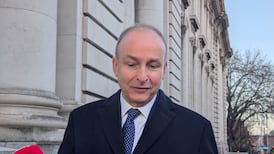The amateur-naturalist's bric-abrac of shells, bones, stones and fossils around the margins of my living-space may suggest I know more than I actually do. The latest addition is a big, smooth limestone cobble, swiped from a strand in Sligo and engraved with the white fossil of a headless herring well, a fish that sort of size. Visitors expect at least a guess at a name but, without the right book, the right drawing, I am lost.
Hence my huge admiration for the real naturalists of the past, who worked hard and systematically to help put names and relationships on nature, building up collections for museums and herbariums, often drawing and painting specimens with patient precision. It was from this mass of material, flowing in from the field, that today's convenient knowledge was constructed.
A good many of these naturalists were women many more, indeed, than got credit at the time. In the early 19th century, even serious scientists among the "lady naturalists" would publish their work under male pseudonyms or let it be attributed to husbands or brothers, such were the social assumptions. In fieldwork for botany, women would take on the more modest sorts of plant: lichens, mosses, seaweeds.
In Ireland, there was a special breed of woman naturalist, drawn from the spirited but often lonely culture of the rural Anglo-Irish. Reading about some of them in a new book written by a team of Irish women scientists, I am fascinated by their dedication. Stars, Shells And Bluebells (published by Women In Technology and Science, and outstanding value at £4.95) is a celebration of 15 "Irish scientific grandmothers" who lived from the 18th century onwards. The description is metaphorical eight of them did not marry but the inheritance is real.
Some of them certainly received due recognition: Matilda Knowles for her work on lichens, Cynthia Longfield for dragonflies, Evelyn Booth for her Flora Of County Carlow, published in 1979. Kathleen King was the moss expert, Annie Massy an authority on molluscs; others worked in astrophysics, aviation, astronomy.
Of them all, I cannot help but identify with Maude Jane Delap of Valentia Island (1866-1953), if only because, in our beachcombing half-a-century apart, we each found two True's beaked whales still one of the Atlantic's least-known species. She rotted one of hers down in the asparagus bed and retrieved the whole skeleton for the Natural History Museum.
There was real doughtiness to the three Delap girls daughters, typically, of a Church of Ireland rector and naturalist: no money, the boys got the education. Maude made a marine biologist of herself and reared generations of jellyfish in bubbling bell-jars in her improvised laboratory. She made genuine discoveries, and sent a succession of rare species up to Dublin fish, sharks, turtles, the remains of whales. A sea anemone was named after her. An indelible image is of Maude and Constance rowing a boat in rough seas beneath the cliffs, towing a trawl for specimens.
No mention of Maude, as it happens, in Nature In Ireland: A Scientific And Cultural History (Lilliput: £20 pbk; £40 hbk), but most of the others are there: this is nothing if not an inclusive book. Twenty-seven essayists, in 600 or so pages, try collectively to show what nature has meant to Irish life and scholarship since the first Celtic ode to a blackbird.
The inspiration came from John Wilson Foster, a Belfast academic (and dedicated bird watcher) who is currently professor of English at the University of British Columbia. His associate editor is Helena Chesney, Keeper of Zoology at the Ulster Museum, and the all-Ireland, inter-disciplinary mix of contributors gives the book much of its vigour and importance. John Feehan, Brendan McWilliams, Christopher Moriarty and Sean Lysaght are among the more familiar names.
Nature In Ireland is not so much about nature itself, as the way people have related to it, as scientists, hunters, artists or sportsmen. There are brief histories of Irish botany, ornithology, mammalogy and so on, but also of cultural attitudes to nature, right down to REPS and NHAs and eco-tourism. Prof Foster's ambition is "to rehouse natural history in Irish culture, from which it has effectively been evicted for a century or so". Culture is Yeats, but also Frank Mitchell and Robert Lloyd Praeger.
By a happy coincidence, Nature In Ireland coincides with a new facsimile edition of Praeger's The Way That I Went, first published 60 years ago. The last facsimile edition was produced almost 30 years ago and my own copy of it has literally disintegrated into separate pages. The new edition (at £9.99) comes from the small but enterprising Collins Press in Cork and, while a paperback, observes the original weight and dignity: a proper fistful. Even better, the House of Figgis (at 5, Parliament Street, Dublin 2, has taken 100 copies of the Collins edition and case-bound them to match the hardback edition of 1937, at £50 a copy. The Figgis family originally encouraged Praeger to write the book. The Way That I Went is a classic celebration of the Irish landscape before its final penetration by the motor car. It is Ireland with its bogs intact, and without chainsaws, bungalows, ESB poles or barbed wire. When the Belfast-born Praeger did his incredible stint of walking to catalogue the plants of the island 5,000 miles at weekends, across every imaginable terrain the only sounds he heard were the birds and the wind, and farmers urging on their horses at the plough.
The man was a dynamo not merely a botanist but "geologist, zoologist, archaeologist, Irish Naturalist Optimus Omnium" in Prof David Bellamy's litany. Frank Mitchell, who sadly died last month, paid Praeger the ultimate tribute of calling his own scientific memoirs The Way That I Followed.
The new edition has all the original photographs: landscapes, flowers, birds, remarkable ruins. Also an introduction (my contribution) which sets Praeger in his scientific context and measures some of the changes in the Irish countryside since he travelled its dusty roads.








